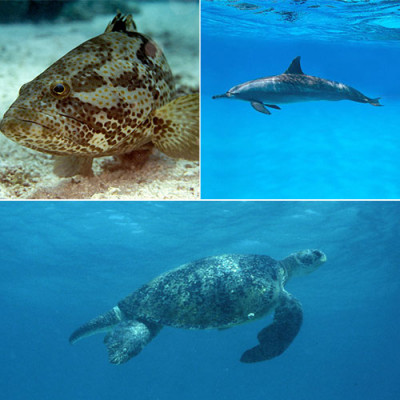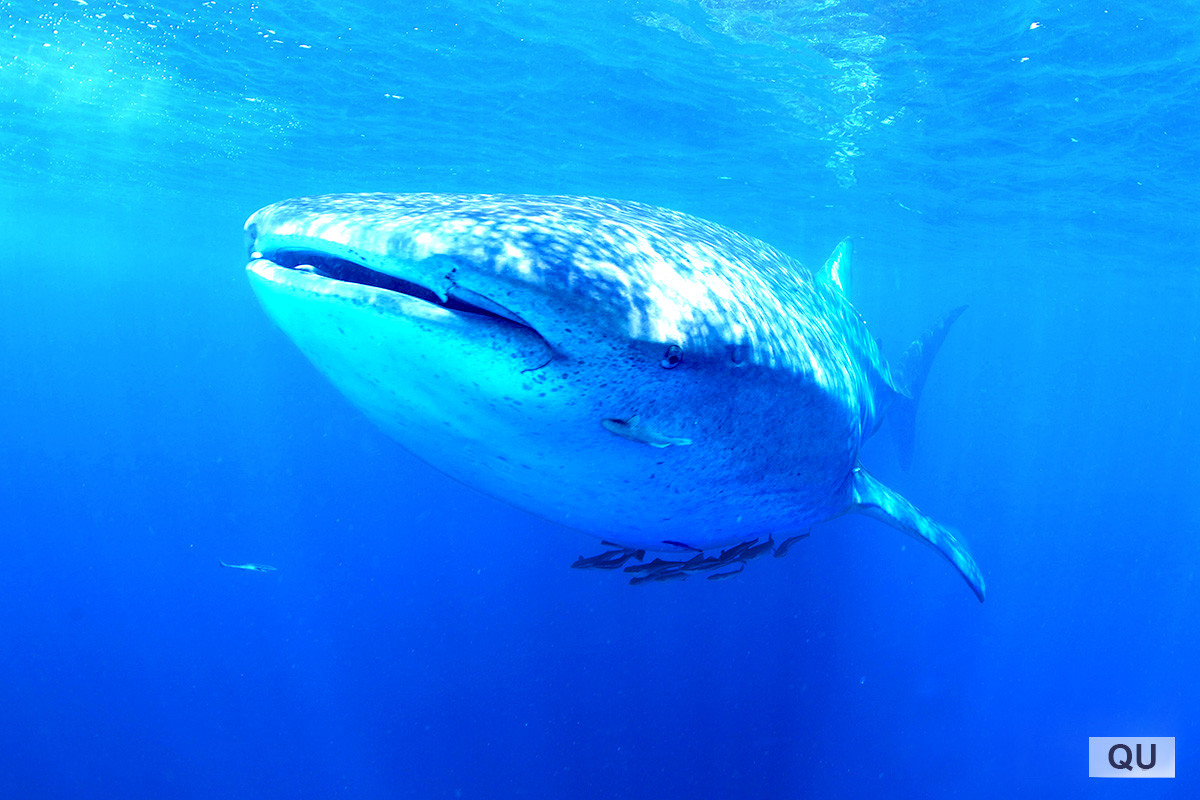Name: Whaleshark
Local name: Qersh Nehm
Scientific name: Rhincodon typus
Classification: Class: cartilaginous fishes; Order: carpet sharks; Family: whale sharks (Rhincodontidae)
Synonym: Rhineodon typus
Size: Being the world's largest fish, it normally attains 12 m, but may reach a maximum length of at least 16 m (18 – 20 m according to unauthenticated reports).
Habitat:
Whale sharks usually occur offshore in open water, but occasionally come close inshore. They are often associated with groups of pelagic fishes, especially tunas. They migrate over large distances and between ocean basins, but return to the same sites every year. Whale sharks feed on planktonic and nektonic prey, such as eggs, larvae and juveniles of fishes, small crustaceans and squids, by filtering them with sieve-like modifications of their gill bars. Little is known about their reproduction except that they are ovoviviparous with litter sizes of over 300 pups. Whale sharks are harmless to humans.
Qatar in has one of the largest whale-shark aggregations in the world. In the summer months, more than one hundred individuals have been spotted in the Al-Shaheen oil field, where the Ministry of Municipality and Environment in conjunction with the Maersk Oil Research and Technology Centre is conducting an extensive research and conservation program. Offshore platforms have become artificial reefs that may play an important role for attracting the whale sharks to this area.
Distribution:
Whale sharks are circumglobal in distribution, occurring in tropical and warm temperate parts of the Atlantic, Indian and Pacific Oceans.
Conservation status:
The species is Vulnerable (VU) according to the IUCN Red List. It is included in Appendix II of the Convention on International Trade in Endangered Species of Wild Fauna and Flora (CITES), regulating the international trade of this species, and it receives special attention within the International Plan of Action for the Conservation and Management of Sharks (IPOA-Sharks), implemented by the Food and Agriculture Organization (FAO) of the United Nations.
Description:
It is a very large, blunt-headed shark with a terminal mouth. The caudal fin is crescent-shaped, with a relatively large lower lobe. The ground color on the back varies from dark bluish grey to brown, with a prominent pattern of light spots arranged in rows and lines, which differ from individual to individual, shading to whitish ventrally. It has small, scale-like teeth.








